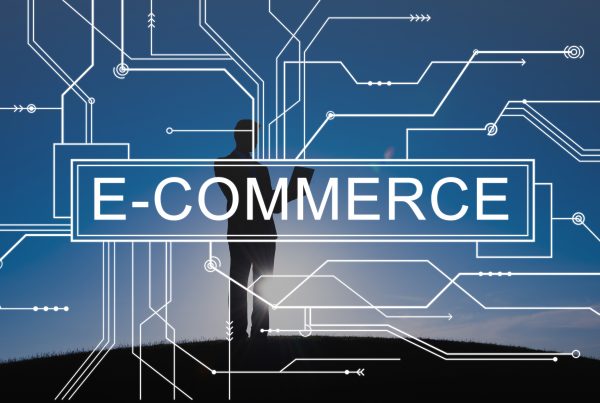Table of Contents
Introduction:
Being different from the competition in the quickly changing world of e-commerce is essential for success. To achieve this, businesses must leverage every available tool and strategy to create unique and memorable shopping experiences for their customers. This is where an e-commerce website development company comes into play. By harnessing the power of data and customer insights, businesses can not only optimize their online platforms but also personalize the shopping journey. In this blog, we’ll explore the art of e-commerce personalization and how it can be a game-changer for your business. We’ll also touch upon the significance of partnering with an e-commerce website designing company in Chennai to execute these strategies effectively.
The Power of E-commerce Personalization
E-commerce websites have transformed the way people shop. With the convenience of online shopping, consumers have access to a vast array of products and services, often leaving them overwhelmed by choices. This is where e-commerce personalization comes into play. It involves using data and customer insights to create tailored shopping experiences that resonate with individual shoppers.
Here are some key benefits of e-commerce personalization:
Increased Conversion Rates: When customers see products and content that align with their interests and preferences, they are more likely to make a purchase. This leads to higher conversion rates and, ultimately, increased revenue for your e-commerce website development company.
Enhanced Customer Engagement: Personalized shopping experiences engage customers on a deeper level. When they feel understood and valued, they are more likely to return to your e-commerce site, reducing churn and boosting customer retention.
Improved Customer Satisfaction: By recommending products that genuinely meet their needs, you can enhance customer satisfaction. Happy customers are more likely to leave positive reviews and refer others to your e-commerce business.
Data-Driven Decision-Making: E-commerce personalization relies on data analysis. This allows you to make informed decisions about product recommendations, content, and marketing strategies, ensuring you’re meeting customer demands effectively.
Implementing E-commerce Personalization
To implement e-commerce personalization effectively, you need the expertise of an experienced e-commerce website designing company in Chennai. These experts understand the local market and can tailor strategies that resonate with your target audience. Here’s how the process typically works:
Data Collection: The first step is collecting data on customer behavior, preferences, and purchase history. This data is the foundation for personalization efforts.
Segmentation: Customers are segmented into groups based on common characteristics and behaviors. This segmentation allows for more targeted personalization.
Recommendation Engines: Advanced algorithms and machine learning are used to create product recommendations based on customer profiles and behavior.
Content Personalization: Personalization extends beyond product recommendations. It also involves tailoring website content, emails, and marketing messages to suit individual preferences.
Testing and Optimization: Continuous testing and optimization are crucial to refine personalization strategies over time. A reputable e-commerce website development company can assist with this ongoing process.
Examples of e-commerce personalization:
Here are a few examples of how e-commerce companies are using personalization to create a better shopping experience for their customers:
- Amazon: Amazon is known for its personalized product recommendations. When you visit Amazon, you’ll see a variety of products recommended to you based on your past purchase history and browsing behavior.
- Netflix: Netflix uses personalization to recommend movies and TV shows to its users. When you log in to Netflix, you’ll see a personalized homepage with a variety of recommendations based on your viewing history and ratings.
- Spotify: Spotify uses personalization to recommend music to its users. When you create a Spotify account, you’ll be asked to tell Spotify about your favorite artists and genres. Spotify will then use this information to recommend new music to you.
Conclusion:
In the highly competitive e-commerce landscape, personalization is the key to retaining customers and driving revenue growth. By harnessing the power of data and customer insights, businesses, along with the expertise of an e-commerce website development company, can craft personalized shopping experiences that resonate with their audience. Additionally, for businesses operating in Chennai, collaborating with a local e-commerce website designing company in Chennai can provide a competitive advantage by tailoring strategies to the unique needs of the region. As e-commerce continues to evolve, those who prioritize personalization will undoubtedly thrive in the digital marketplace.
FAQ
How can I use customer reviews and testimonials to improve my business?
Customer reviews and testimonials can be a valuable source of information for improving your business. Here are some ways you can use them:
- Identify areas where you can improve your products or services.
- Get feedback on your customer service.
- Learn what your customers are looking for.
- Use positive reviews to attract new customers.
- Use negative reviews to improve your customer experience.
- Keep track of your progress over time.
How should I respond to negative reviews?
When a customer leaves a negative review, it's important to respond in a professional and courteous manner. Here are some tips for responding to negative reviews:
- Start by thanking the customer for their feedback.
- Apologize for any inconvenience or dissatisfaction they may have experienced.
- Explain the steps you're taking to address the issue.
- Offer to help the customer resolve the issue.
- Be honest and transparent about the situation.
- Don't get defensive or argumentative.
- Focus on resolving the issue and providing excellent customer service.
How can I encourage customer reviews and testimonials on my e-commerce website?
There are a number of things you can do to encourage customer reviews and testimonials on your e-commerce website, including:
- Make it easy for customers to leave reviews. The easier it is for customers to leave a review, the more likely they are to do so. Make sure that your website has a clear and concise review process.
- Ask for reviews. Don't be afraid to ask your customers to leave reviews. You can do this in an email, on your website, or on social media.
- Offer incentives for reviews. You can offer incentives for customers to leave reviews, such as discounts, free products, or gift cards.
- Respond to reviews. When customers take the time to leave a review, it's important to respond. This shows that you value their feedback and that you're committed to providing a great customer experience.
- Promote reviews. Share positive reviews on your website, social media, and email marketing campaigns. This will help to attract new customers and build trust with existing customers.
Why are customer reviews and testimonials important for e-commerce businesses?
Customer reviews and testimonials can help, e-commerce businesses in a number of ways, including:
- Increasing sales. Studies have shown that positive reviews can lead to increased sales. For example, one study found that a 1-star increase in product rating can lead to a 5% increase in sales.
- Building trust. Reviews can help to build trust with potential customers. When potential customers see that other customers have had a positive experience with a product or service, they're more likely to trust the business and make a purchase.
- Improving customer satisfaction. Reviews can help businesses identify areas where they can improve their products or services. By taking customer feedback into account, businesses can improve the customer experience and increase customer satisfaction.
- Providing social proof. Reviews can provide social proof that your products or services are worth buying. When potential customers see that other people have had positive experiences with your business, they're more likely to trust you and make a purchase.
What are customer reviews and testimonials?
Customer reviews and testimonials are feedback from customers about their experience with a product or service. They can be written on a company's website, social media pages, or third-party review sites.
What are the future trends in e-commerce analytics?
-
- Personalization: E-commerce businesses will use AI and machine learning to personalize the shopping experience for each individual customer. This will include things like recommending products that the customer is likely to be interested in, providing targeted discounts, and sending personalized marketing messages.
- Augmented reality (AR) and virtual reality (VR): AR and VR will be used to create more immersive and engaging shopping experiences. For example, customers will be able to try on clothes virtually or see how furniture would look in their home before they make a purchase.
- Voice search: Voice search will become more popular, as customers become more comfortable using their voice to interact with their devices. E-commerce businesses will need to optimize their websites for voice search in order to make it easy for customers to find the products they're looking for.
- Real-time analytics: E-commerce businesses will use real-time analytics to track customer behavior and make changes to their website or marketing campaigns in real-time. This will help them to improve the customer experience and increase sales.
What are some common mistakes that businesses make with e-commerce analytics?
There are a number of common mistakes that businesses make with e-commerce analytics, including:
- Not tracking the right metrics: Businesses often track metrics that are not relevant to their goals. It's important to choose metrics that will give you the most valuable insights into your customers and your business.
- Not analyzing the data: Even if you're tracking the right metrics, it's important to analyze the data and identify trends and patterns. This information can help you make informed decisions about your business.
- Not making changes based on the data: Once you've identified areas where you can improve, you need to make changes to your website, marketing campaigns, and products based on the data. Otherwise, you're just wasting your time and money.
- Not using an e-commerce analytics platform: E-commerce analytics platforms can make it easier to track, analyze, and act on data. If you're not using an e-commerce analytics platform, you're making things more difficult for yourself.
How can I get started with e-commerce analytics?
If you're just getting started with e-commerce analytics, here are a few steps you can take:
- Choose an e-commerce analytics platform that is right for your business.
- Set up your tracking code on your website.
- Start tracking metrics that are important to your business.
- Analyze the data and identify areas where you can improve.
- Make changes to your website, marketing campaigns, and products based on the data.
What are the benefits of using an e-commerce analytics platform?
There are many benefits to using an e-commerce analytics platform, including:
- Ease of use: E-commerce analytics platforms are designed to be easy to use, even for businesses that do not have a lot of experience with data analysis.
- Powerful features: E-commerce analytics platforms offer a wide range of features that can help businesses track their performance and make informed decisions.
- Scalability: E-commerce analytics platforms can be scaled to meet the needs of businesses of all sizes.
- Cost-effectiveness: E-commerce analytics platforms are typically more cost-effective than hiring a data analyst to collect and analyze data manually.
What is the difference between e-commerce analytics and web analytics?
E-commerce analytics is a subset of web analytics that focuses specifically on data related to online stores. Web analytics, on the other hand, is a broader term that encompasses all data collected from websites, regardless of whether they are e-commerce websites or not. Some of the key differences between e-commerce analytics and web analytics include:
- E-commerce analytics focuses on metrics that are specific to e-commerce, such as sales, conversion rates, and average order value.
- Web analytics focuses on a wider range of metrics, including traffic sources, bounce rates, and page views.
- E-commerce analytics data is typically more complex and difficult to interpret than web analytics data.
- E-commerce analytics is more important for businesses that sell products online than for businesses that do not.
What are the types of E-Commerce?
There are 4 main types of E-Commerce –
- B2B (Business to Business) – Here, a business sells its products or services to another business. In a majority of cases, the business that is at the buying end further sells the products or services to the consumers.
- B2C (Business to consumer) – This is the most common of all the types wherein a business sells its products or services directly to the consumer.
- C2B (Consumer to Business) – This is where consumers sell products or services to the companies.
- C2C (Consumer to Consumer) – This is where consumers exchange goods and services among themselves and make money by charging transaction or listing fees.
What would be the E-Commerce future in India?
By the end of 2021 there will be over 600 million internet users in India. On account of the users, the E-Commerce sector is expected to hit a whopping 200 billion USD by 2026. There are several E-Commerce trends that are making their way online, including smart devices that use voice activated commands to do your shopping on. There has been increased personalization in ads and promotions that has significantly boosted conversions. Much of online marketing will soon be automated, freeing precious human resource from mundane marketing tasks. There is widespread use of AI and VR to enhance customer experience. In 10 years, India’s E-Commerce industry is expected to become the second largest E-Commerce market in the world.
What are the benefits of having a website to your business?
It has come to a point that a business is only considered successful if they have a strong online presence. This is evidently done by creating a dedicated website to the brand. The benefits of owning a website for your business are,
- A credible repository of information on your business
- 24 x 7 customer access to your business
- Boosts interaction with the brand
- It helps expand your market reach
- It improve brand awareness to a global scale
- Provides you with valuable consumer insights
- Helps you beat other competitors with online presence
- Access to all digital modes of advertising
- Makes information exchange easier
What is the difference between website design and website development?
When searching for a web developer, it is important for you as a client to know the difference between website design and website development. The difference is quite distinct but a web developer is capable of doing both if they are skilled enough. Web design is the initial ideation and planning of a website’s layout, appearance and content. Web development is the actual process of developing code for creating the site and its subsequent maintenance. Web design is about creativity, while web development is completely technical. You need to engage the services of web developers who can help you with both, as they know how to recreate your brand personality on the website.










